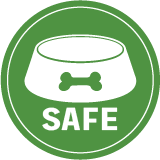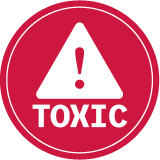Helping Your Pup Feel Better, 1 Belly at a Time
Is your dog suddenly sick with vomiting or bloody diarrhea? Here's what every pet parent needs to know to catch this hidden danger early - and help your pup bounce back fast.

STORY AT-A-GLANCE
- Hemorrhagic Gastroenteritis (HGE) strikes without warning, often in otherwise healthy dogs, and can escalate rapidly into a life-threatening emergency without prompt veterinary care and aggressive fluid therapy
- Small and toy breeds, such as Yorkshire Terriers and Toy Poodles are especially prone and those around five years old are more susceptible to HGE, although it can affect any dog regardless of size, age, or breed
- Clostridial overgrowth (a type of bacteria), pancreatitis, food sensitivities, stress, and unknown environmental triggers are all suspected contributors, but no single definitive cause of HGE has been identified
- Veterinary diagnosis relies on current symptoms, blood tests like packed cell volume (PCV), and ruling out other serious conditions such as parvovirus, parasites, or internal obstructions
- After hospital treatment, home care involves bland meals, hydration, probiotics, stress reduction, and careful monitoring to prevent relapse and support long-term gut health
When your beloved canine companion suddenly becomes ill — vomiting, experiencing diarrhea, and losing energy — it can be deeply alarming and emotionally distressing. One particularly serious condition that may present with these sudden and severe gastrointestinal symptoms is Hemorrhagic Gastroenteritis (HGE).
This condition can affect any dog, regardless of breed or age, but it tends to appear most frequently in small and toy breeds. Identifying it promptly and seeking veterinary help immediately will help ensure the best outcome for your pet.
What Is HGE and Why Can It Be Life-Threatening?
Now more commonly referred to as Acute Hemorrhagic Diarrhea Syndrome (AHDS), Hemorrhagic Gastroenteritis refers to inflammation in the stomach and intestines, accompanied by internal bleeding. The initial symptoms would be a sudden onset of vomiting and bloody diarrhea.1 HGE is distressing, but you must understand that it is a highly treatable condition, as long as it’s addressed early.
Due to the rapid fluid loss, primarily through the gastrointestinal tract, this condition can quickly lead to severe dehydration, low blood pressure, and — in extreme cases — shock or even death.2 This is why HGE is classified as a veterinary emergency, and requires immediate attention.
Though your dog may appear healthy prior to the onset of symptoms, their condition can decline dramatically within hours, so recognizing the early signs and acting promptly can significantly influence the outcome.
Signs of Hemorrhagic Gastroenteritis to Watch Out For
One of the most troubling aspects of HGE is the speed at which it progresses. Even if your dog appears completely normal in the morning, they may end up in serious distress after just a few hours. Hence, you must know how to identify the early warning signs. Common symptoms include:3
- Profuse, bloody diarrhea (often described as having a jelly-like consistency similar to raspberry jam)
- Repeated vomiting (with or without blood)
- Lethargy or weakness
- Loss of appetite
- Signs of abdominal discomfort, such as whining, restlessness, or a hunched posture, or pain when trying to pick them up or touch the abdomen
Which Dogs Are Most Vulnerable to HGE?
HGE can occur in dogs of any age, breed, or size, but several patterns have emerged that suggest certain dogs may be more susceptible.4
- Toy and small breeds are overrepresented in reported cases. This includes breeds such as Yorkshire Terriers, Miniature and Toy Poodles, Miniature Schnauzers, Miniature Pinschers, and Maltese.
- Young to middle-aged dogs, particularly those around 5 years old, are most commonly affected.
- Dogs with a history of pancreatitis or gastrointestinal sensitivity may be at higher risk.
Even if your dog does not fall into one of these high-risk categories, it is still possible for HGE to develop without warning. Therefore, all dog owners should be vigilant about any abrupt changes in their dog’s health or behavior.
Factors That Can Contribute to HGE
Despite ongoing research, the exact cause of Hemorrhagic Gastroenteritis remains undetermined. It is likely that multiple factors contribute to the condition, rather than a single identifiable cause. These include:5
- Clostridium perfringens, a type of bacteria found in the normal gut flora of many animals, is often detected in affected dogs. It may release toxins that damage the intestinal lining, leading to fluid loss and bleeding.
- Pancreatitis, an inflammation of the pancreas, can impair the release of digestive enzymes like trypsin. This in turn may allow bacterial toxins to build up and damage the intestinal tract.
- Food allergies or sensitivities, especially to new or rich foods or treats, may trigger an inflammatory response in some dogs.
- Environmental stress, such as moving to a new home or exposure to loud noises, has been noted as a possible trigger.
- Parasites or infections may play a role in some cases, especially when multiple dogs in the same environment become ill at the same time.
Diagnosing and Treating the Condition Is Crucial to Your Pet’s Survival
If you suspect your pet has HGE, you must bring them to the vet for examination and treatment immediately. Your vet will perform a number of tests to definitively confirm this condition, such as:6,7
- Packed Cell Volume (PCV) testing — This blood test measures the concentration of red blood cells. A value exceeding 60% is a strong indicator of dehydration and often points toward HGE.
- Fecal exams and parvovirus tests to rule out infectious gastrointestinal diseases, such as those due to viral, bacterial or parasitic causes.
- X-rays or ultrasounds to examine internal organs and rule out obstructions or tumors.
- Urine and biochemistry panels to assess kidney function, protein levels, and electrolyte balance and to rule out other causes such as Addison’s disease (hypoadrenocorticism).
Treating HGE and Supporting Your Pet with Recovery
Once diagnosed, your vet will advise immediate treatment along with aggressive intravenous fluid therapy. Your vet will advise your pet to be hospitalized for at least 24 to 48 hours for monitoring and to ensure that IV fluids are being administered properly to prevent dehydration.
Your pet will be monitored closely for signs of improvement or complications. As long as treatment is immediately administered, noticeable improvement may be seen within the first 12 to 24 hours. Additional treatments your vet may suggest include:
- Antibiotics, especially if a bacterial infection is suspected.
- Anti-nausea and anti-diarrhea medications to provide relief and reduce further fluid loss.
- Plasma transfusions, in severe cases, to correct dangerously low blood protein levels.
- Natural treatments such as cold laser therapy and acupuncture treatments are also helpful for relief of pain and inflammation and to aid in healing the gut.
It is also important to withhold food and water for the first 24 hours, so pet’s GI tract can rest and recover. Once your dog is discharged, you will need to monitor their condition closely. Remember these tips:8
- Reintroduce food slowly — Start with a bland diet such as boiled chicken and plain white rice or canned pumpkin. This helps the stomach settle and supports gentle digestion. Homemade bone broth (without onions) is also a wonderful option. Gradually reintroduce your dog’s regular diet over a seven- to 14-day period, unless your veterinarian advises a longer transition.
- Keep your dog hydrated — Access to clean, fresh water at all times is essential. If your dog is still recovering, your veterinarian may recommend electrolyte solutions to support rehydration.
- Observe for relapses — Approximately 10% to 15% of dogs who experience HGE may have a recurrence. Be vigilant about monitoring stool consistency and behavior. If you see blood, or if symptoms return, contact your veterinarian immediately. Also avoid feeding any rich or fatty food or treats (such as organ meat, cheese or ice cream, etc.) if you suspect they may have triggered the initial HGE episode.
- Maintain a stress-free environment — Minimize loud noises, chaos, or exposure to unfamiliar dogs. Calm surroundings can promote healing and reduce the chance of recurrence.
- Support digestive health — Consider adding a probiotic supplement to your dog’s daily routine. Probiotics help balance good bacteria in the gut and may prevent future flare-ups. If you are not sure which one to use, consider microbiome testing to find out which probiotic strains would be best for your pet. Appropriate herbal supplements as recommended by your integrative veterinarian can also help to correct any underlying imbalances in your pet’s digestive system that may have contributed to HGE occurring.
HGE Can Be Unsettling, but with Proper Action, You Can Help Increase Your Pet’s Chances of Survival
When illness strikes, especially something as serious and unsettling as HGE, it is natural to feel anxious or overwhelmed. However, with the right knowledge and by working closely with your integrative veterinarian, you can guide your pet through this challenge.
Most importantly, always trust your instincts. If something seems off — whether it’s a change in appetite, energy, or the appearance of your dog’s stool — it is better to seek veterinary advice than to wait. In the end, helping your pup feel better truly does begin with paying attention to their belly — because digestive health plays a critical role in their overall well-being.










